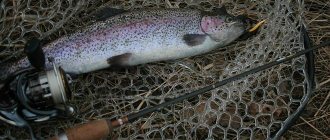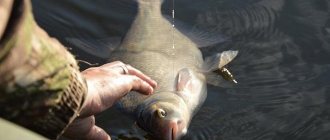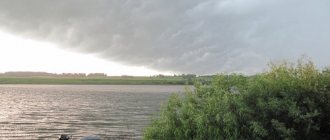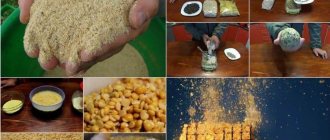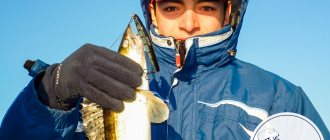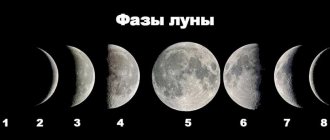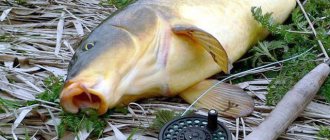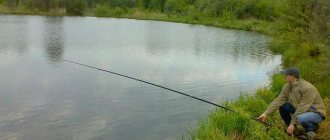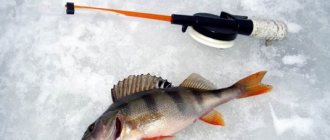Yuri 12/15/2020 332
Atmospheric pressure, as well as several other factors, affect the bite of crucian carp. It is important to know when it is best to catch this fish at certain times of the year. Some fishermen are upset that they returned home without a catch, but it is worth knowing what time and under what weather conditions you need to go fishing so as not to return empty-handed.
At what pressure is the bite better?
It is difficult to provide for all conditions. We must come to terms with the fact that there are periods without biting, regardless of the weather. If you wait until all the parameters converge, the gear will decay and the bait will rust.
The result of fishing depends on pressure at any time of the year and not only on its absolute, but also on relative indicators - how it changes in the interval of 1 - 3 days.
If the pressure is stable for several days, you can count on a bite. With the mercury column creeping up, you shouldn’t hope for a big catch.
On a note
Normal pressure for fishing is slowly decreasing. Sharp jumps and a rising barometer needle negatively affect the bite. Barometer readings are from 747 to 750 mm.
Before rain, the fish bite better because the pressure slowly decreases and the density of the water increases. This is a signal for the fish: you need to refresh yourself and stock up on energy.
What time of year is best to catch crucian carp?
There is no particularly strong difference in the bite, based on the seasons. But what is certain is that crucian carp bite better in the off-season, when nature renews itself in autumn and spring.
Fishermen have a phrase - “dead season”. It is especially relevant in winter. Usually such a time comes when the ice has already firmly and firmly taken possession of the reservoirs, and now it will not melt soon. During this period of time, the crucian carp does not have enough oxygen, it is less active than at other times, and food fades into the background for it.
Therefore, try to catch crucian carp at the beginning or end of winter, when there is no hard ice yet and frosts have not hit.
Recommended atmospheric pressure when fishing for crucian carp is considered to be from 745 mmHg. up to 752 mmHg Naturally, if it is slightly lower or higher, the crucian carp continues to feel normal. These values are suitable for both autumn and winter. Be sure to take this important factor into account if you go fishing.
Autumn is especially considered a good time for fishing, because sensing the imminent onset of rain and cold, the fish try to eat for future use, which means fishermen have every chance of getting a good catch.
Optimal weather for catching crucian carp
It would be more correct to consider the weather as a whole. The best fishing happens on days when the pressure, wind direction and temperature are favorable for crucian carp. At this time, he feeds with appetite, which means he will not ignore the baited hook.
In calm weather, crucian carp bite less actively than in a light breeze. Ripples in the water saturate the water with oxygen. It prevents the fish from seeing what is happening on the shore; the fisherman does not have to disguise himself.
Crucian carp will begin to be caught after the weather stabilizes. A strong wind brings a lot of food to the coastal zone, so there is no need to cast the tackle far - the fish gather near the shore. For biting crucian carp the following are important:
- Wind strength and direction;
- Water temperature.
A south wind in cool weather is good for biting, but if the water is already warm, then the direction of the wind does not play a significant role. Other factors taken into account:
- Atmosphere pressure;
- Water level;
- Presence of precipitation.
The bite decreases or stops completely with a sharp change in water level.
The influence of atmospheric pressure on fish behavior
The thing is that air pressure affects the swim bladder of the fish, which contains a gaseous substance. With sudden changes in barometer readings, it begins to contract or expand. It turns out that the volume of the bubble becomes larger and smaller, thereby affecting the buoyancy of the fish. It may begin to be pulled to the bottom or, conversely, closer to the surface, where it bites extremely rarely.

The change in the behavior of crucian carp under different pressure is due to the reaction of its swim bladder
The size of the swim bladder also affects the functioning of the fish’s digestive system. When atmospheric pressure decreases, the volume of this organ increases, which means that it is easier and faster for crucian carp to get enough. Therefore, this is not the best time for fishing. With high air pressure, it is more comfortable for fish to be at the very bottom, and at great depths. Unfortunately, in such places the crucian carp stops feeding and practically does not move around the reservoir.
Pressure changes also affect the fish's ability to navigate through the water. Thanks to the lateral line, it perceives various vibrations emanating from objects. When the pressure changes, their perception is disrupted. For example, in this case it can be difficult for crucian carp to even notice the bait, and not just try it.
Another point why an increase in air pressure affects the behavior of fish can be explained by changes in the water level and oxygen regime. When barometer readings are above 750 mm Hg. Art. The water level drops because its density increases, and oxygen in the reservoir becomes significantly less. For crucian carp, lack of oxygen is an extremely negative factor, which slows down all its processes, including digestion.
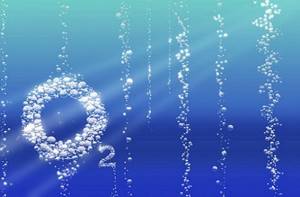
Pressure changes affect the oxygen level in the water, which affects the behavior of all fish
With increasing pressure, complete calm is also often observed. Water masses do not mix with air and in summer, in extreme heat, 2-3 hours are enough for the oxygen level to drop sharply. In such weather, it seems that there are simply no fish in the reservoir. However, she hasn't gone anywhere, she's just very uncomfortable feeding.
Effect of rain and wind on biting
They say that in rainy weather the bite is more intense. In summer this is true if it is drizzling and the wind is weak and warm. Heavy rainfall reduces the bite. Streams of water wash dirt into the pond, the water becomes cloudy, and the bite stops.
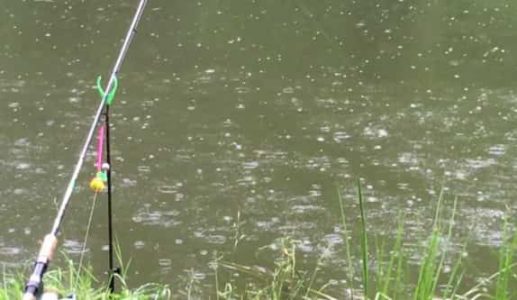
Depending on the depth, size, location of the reservoir and the abundance of vegetation, in one place crucian carp is caught after the rain, in another - before it. In reservoirs with high banks, transparency is lost faster than with flat ones.
The dependence of the bite on the rain is as follows: as long as the threshold of permissible turbidity is not exceeded, the fish will be caught well. As soon as visibility becomes critical, the pecking will stop. The pressure decreases during rain, but it is not this that causes the bite to fade, but the turbidity of the water.
If you find yourself fishing in the rain, try to stay away from streams and rivulets that flow into the lake. On a river in such weather, it is better to stand upstream from the inflowing tributary.
In order not to be left without a catch, be guided by the following signs:
- The pressure should be stable over the last two to three days, or at least not increase during the day.
- The breeze, creating ripples in the water, promotes biting, and the complete silence and smooth surface is suitable for relaxation, but not for fishing.
- If it's drizzling outside, fish will be caught. If it pours like buckets, no.
The wind and high wave will benefit those fishermen who will come to catch crucian carp tomorrow: fishing on a high wave is not only uncomfortable, but also unpromising.
Why doesn't the crucian carp bite?
“He who is not lazy to fish will catch fish,” says popular wisdom, clearly underestimating other risk factors for a fisherman to come home without fish. Yes, it happens: yesterday I fished and experienced fishing happiness to the fullest, but today I fished in the same place and didn’t take anything. Experienced fishermen can immediately assess the situation and name the reasons for the weak activity of the fish. And fishermen without sufficient experience would need to know the possible reasons for the failure of fishing for crucian carp.
- Tackle.
Each type of fishing must have appropriate gear for it. If you want to catch a large fish, but the hook on the line is small, then you can hardly count on success: it will be very difficult to hook in this case. It is also futile to hope that a small fish will “take” a large or medium hook. An article about choosing the right hook - this point should not be underestimated; often it is because of an incorrectly selected hook that the crucian carp does not take or cannot be hooked. - Fish spawning.
During spawning and two to three weeks after it, the fish do not bite. How long this period will also depend on the water temperature. - Atmosphere pressure.
A simple formula: at any stable atmospheric pressure, biting is possible. The fish will not bite if the pressure changes sharply throughout the day. This fact will prevent you from unsuccessful fishing. - Temperature parameters.
Here, too, the fish has many secrets. In spring, the water in the shallows warms up faster; you need to fish near the shore, in shallow water. In summer, the water warms up and loses oxygen. The fish move to deeper water horizons. Large temperature changes also have the most unfavorable effect on the behavior of fish. - Human factor.
Sometimes we feel ashamed for our brothers who kill fish with swords or run along the shore with electric fishing rods. And this is not the whole list of people’s savage attitude towards flora and fauna. But unsuccessful fishing can be caused not only by a barbaric attitude towards nature. Sometimes the noise on the shore, the stomping of feet and loud conversations will deprive you of the fishing happiness of going home with your catch. - Presence or absence of food supply.
If the reservoir is “dead”, that is, the food resource for fish is small, or you underestimate the factor of baiting the fish for several days before fishing, then it is futile to wait for a high catch. Read about how to properly feed crucian carp in a special guide on our website. - Times of Day.
No fisherman will say that he had good fishing in the afternoon heat. At this time, the fish are inactive. And you need to go fishing at dawn or, conversely, before sunset. At this time you will have the maximum opportunity to return home with fish. - Poplar fluff
will leave you without fishing for a while. Having swallowed poplar seeds, the fish “sick” for a long time, and there will be no bite at this time.
Check out the video review, which describes the influence of weather conditions on the success of crucian carp fishing during different seasons of the year.
Favorable conditions for bream fishing
Warm water makes bream lethargic and it loses its appetite. If it’s hot for 3-4 days and the water temperature exceeds 24C, you shouldn’t hope for a bite. But there remains the opportunity to go for bream at night, when the water temperature drops.
Atmospheric phenomena - precipitation and light winds lead to the fact that the bream begins to actively feed. In unstable weather, he bites worse, or even completely refuses the offered bait.
The warmth and wind blowing from the southwest promise a decent catch.
On cloudy summer days, bream often stands in shallow water. In hot and windy conditions, it rises above the hole in the middle of the water, but you have to wait a long time for a bite - the fish does not show interest in the food, it is busy looking for the most comfortable conditions.
Atmospheric pressure: what a fisherman needs to know
Why one day the fish actively bites, but the next day is absolutely not interested in the bait, is often explained by its sensitivity to pressure changes. The bottom line is that changes in atmospheric pressure are closely related to changing weather conditions. The way the barometer needle behaves is determined by the action of cyclones and anticyclones. In short, this relationship can be represented as follows:
- When the level of atmospheric pressure rises, the weather improves, the amount of precipitation decreases, it gets colder in winter, and, on the contrary, it becomes even warmer or hotter in summer.
- When atmospheric pressure decreases, the possibility of precipitation increases, air humidity increases, so in summer the thermometer needle goes down, while in winter it becomes noticeably warmer.
The behavior of the fish no longer depends on what the current air pressure is, but on how quickly it changes.

She can get used to and adapt to any barometer readings, but this will take some time, during which her interest in food will be noticeably lower. It is optimal when the atmospheric pressure values remain within the normal range for a long time - this is 750 mm Hg. Art., changing by 2-3 divisions in one direction or another.
In some reservoirs, fish are more dependent on air pressure, while in others they do not react so strongly to this factor. It happens that in a particular pond or lake the same crucian carp or carp generally bites only at certain barometer readings. In any other case, it goes deeper and into snags, where it awaits more favorable conditions.
Weather for the predator
To a greater extent, weather conditions affect the behavior of a school predator. If the pressure has decreased over the previous 2–3 days, then the perch and pike perch will not bite. With this picture, you are left with a choice - either not to go fishing at all, or to take gear for pike. The optimal weather for perch and pike perch is a clear day and high pressure.
A predator that hunts from ambush is active at low pressure. Pike is little sensitive to changes in atmospheric pressure, but if the heat lasts for a week, which is accompanied by high pressure, its hunting instincts are dulled. The bite will begin after the barometer column creeps down. In summer and autumn, rainy weather is the norm for pike.
Air pressure
Atmospheric pressure and its changes in any way have a great influence on the fish bite. You can monitor the pressure on meteorological sites or yourself . An ordinary home barometer will certainly warn of weather changes and can help in forecasting fish activity.
To the question “At what pressure is crucian carp active?” you need to answer taking into account the current time of year. Increasing pressure suggests improvement in weather conditions, and decreasing pressure indicates an upcoming cyclone (wind, clouds, precipitation).
What pressure is best for crucian carp in summer?
It’s no secret that in summer, during prolonged heat, all fish are inactive. Most often at this time, crucian carp come out to feed in the morning and late afternoon . In this case, it is the low pressure that tells us that a cyclone is approaching and the bite may change. For crucian carp in summer, low or falling pressure is better, not a very cloudy day with a little wind.
At this time, thunderstorms often occur, air pressure “jumps” and the bite can vary from absolute zero to very active. And the constant heat in the summer or the same long-term cold snap, a prolonged cyclone with precipitation and constant low pressure forces the crucian carp to reduce activity.
During the summer heat, the forecast of decreasing pressure indicates to us that the bite is likely to activate. In this case, the activity of crucian carp increases even before the pressure decreases, passes at a reduced pressure, and persists for a certain time after its increase.
Air pressure and activity of crucian carp in spring, winter, and autumn
In the cool season (in certain regions also in late or early summer), the influence of air pressure on fish activity is different. It is no secret that the temperature of the reservoir affects the metabolism of fish, and crucian carp, as a rule, bites when the temperature of the reservoir is more than 9 degrees . During the cold season, constant high pressure and calm weather contribute to a decrease in temperature. This, naturally, is not the best time for fishing. Low pressure, on the contrary, brings warming, the air becomes humid and windy, and crucian carp begin to move in search of food to places with warmer water.
Most often, during the cold season, fish activity improves when air pressure decreases.
How to determine blood pressure
Rarely does anyone go fishing with a barometer, but you can find out whether pressure is low or high without a special device. Clear sunny weather is accompanied by high or normal (optimal for biting) pressure.
A sign of low pressure in the absence of wind is foam at the coastal edge. Creeping smoke from a fire indicates that the barometer has dropped below normal.
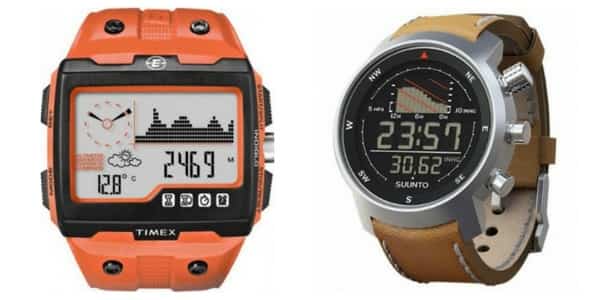
When fishing, it is convenient to use a portable electronic barometer or a watch with a pressure recording function (look for these in the lines of elite and budget manufacturers). And what is especially important is that a graph showing weather conditions over time is displayed on the display of the electronic device.

